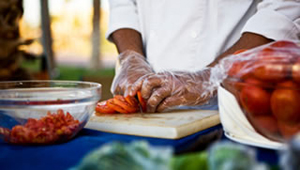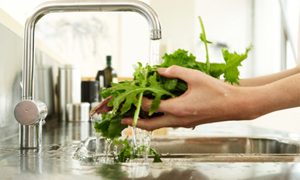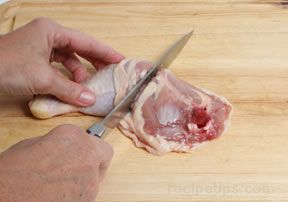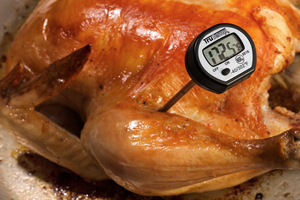
Source: www.jessaminehealth.org
In Malaysia, it is compulsory for food handlers to get vaccinated and attend a food handler’s course. The aim is simply to reduce food contamination and avoid us, the consumers from getting sick.
However, many of us are food handlers ourselves. We prepare breakfast for our children, dinner for the family and once in a while treat our own cravings to a nice fruit shake. We are our own risk. Knowing that, here are ways to prevent ourselves from being the victim of our own doings.
In this article, I will attempt to point out some pit falls in food preparation that can cause us or our family to fall sick. We might overlook them, not knowing that it can cause food related illness.
WASH, WASH, WASH!
Yes, we already know that washing hands before preparing food and often during preparation of food is cardinal. However, the tools that we use in preparing food must be washed as well. Cleaning alone is not enough. It is not going to kill the germs basking on the surface of the cutting board.

Source: spryliving.com
We need to sanitize them after each use. All tools and surface areas that might come in contact with raw meat or vegetables should be sanitized with a solution of 5 mls of bleach mixed in 750 mls of water or by rinsing in clean hot water. The sanitizing solution can be used to wipe surfaces or as a cleansing medium. As germs can grow well in damp places, keeping dry is highly recommended.
Ulam or raw vegetable is still a favourite dish in Malaysia cross culturally. They should be wash thoroughly before being consumed. Hard produce like carrots and cucumber can be scrubbed gently under running water. You still need to wash fruits even if you plan to peel them later. Germs from the outer layer can be accidentally transferred to the inside during handling.
Washing not only removes germs and possible chemical off the food, but it also helps dilute certain cancer causing agents that may be present in food. An example is the reduction of liver cancer causing aflatoxin levels in nuts and corn product[i].
CHANGE, TRANSFORM, WHATEVER YOU CALL IT
How often do you change your hand towels? In fact, we do not have to wait till the hand towels appears soiled or soggy before we change it. Daily hand towel change is advisable. If you can afford it, using the non-fabric hand towels or paper towels is better.
Most Malaysian homes use rags to clean the table after a meal. We could tell that the rags have not been changed since oblivion by its tattered and mildewed appearance. The batik patterns formed by wiping off spilled ketchups, curry and spaghetti sauce will not win accolades in any fashion shows. They are nothing but a good medium for bacterial growths. Therefore, a daily change of these rags or at least soak in hot water or sanitizing solution will make you a winner.
SEPARATE, DIVIDE, BARRICADE!
The design of homes in Malaysia added with the complexities of preparing our local cuisine forces us to prepare raw food and cooked ones in the same place. Raw and cooked food must be segregated at all times. Not even a peek. The juices and excess from raw vegetable, meat, poultry and seafood might contain germs that may contaminate the cooked food. Until you have a pair of superman’s bionic eyes to confirm the germs’ absence, total separation is non-negotiable.

Source: www.recipetips.com
The separation of raw food from the other food begins at the time when you do your marketing. For others, it begins during the process of slaughtering. Yes, some of us still slaughter our chickens. Do not lump all items in the basket or food carriers without some sort of barriers between them. Any leaked bags should be immediately replaced.
Use separate utensils and kitchen areas (no wonder they have wet and dry kitchen) for raw and cooked food. Usually, that is not possible. After you have prepared raw food for later use, store them in containers or plates to avoid dripping and keep them in the fridge. If you want to use them immediately, place the cut raw items in plates or bowls avoiding contact with any surfaces, especially cooked food. Make sure to clean and sanitize all possible contact surfaces before preparing cooked food.
FRIDGEKEEPING
In the fridge, all raw food must be placed below your cooked items. So, remember, even if you have leftovers from dinner, it should be placed on the TOP shelf in the fridge. You would not want the excess liquid or juices drool over and contaminate the cooked food.
Have you ever been in a full to the brim bus or LRT? It is not comfortable at all even with the full blast air conditioner. Same goes for food stored in the fridge. An overcrowded fridge does not allow cool air to circulate between the foods. Circulation is needed to ensure adequate chilling. This principle is also applied in vaccine storage facilities.
Some of us really love to keep and store things. People retire, tyres get worn out, library books overdue. Food too. Cooked food should not be left too long in the chilling section in the fridge. Most food gets spoiled after 3-5 days. Some will spoil after one week. If you are unsure, throw them out. The bacteria that cause food poisoning does not affect the appearance, odour and taste of food. Frozen food keeps food longer, most of the time, until months.
FROM THE ARCTIC TO THE SAHARA
One of the frequent things that even experienced cooks may do wrongly is the thawing technique. You should never leave frozen food items standing at room temperature. Worse of all, Malaysians like to put the frozen meat in the sink, where we wash. Germs will multiply by many folds when left at room temperature.
If you are the type that plan ahead, you can thaw in the chilling section of the fridge. Thawing in the fridge usually takes overnight. However, if you are the impromptu type, deciding the menu at the eleventh hour, you can use the microwave to thaw. Word of caution though, the food must be cooked immediately after that. Another suggestion, why not make it simpler by cooking the frozen food immediately and do away with the thawing process? Yes, you can do that and it is still safe.

Source: www.chow.com
LET ‘EM BURN!
Materialistic as it seems, we tend to be thorough with our accounting when people owe us cash. The same principle should be applied when cooking. We must thoroughly cook our food long enough to ensure that even the centre of the food is not spared from the heat. For the technically inclined, the optimal cooking temperature must be 70ᴼC. Thirty seconds at 70ᴼC will adequately kill most dangerous germs. One useful kitchen gadget is the thermometer. Use the thermometer to ensure that you have reached the optimal temperature. For thick meat, pierce the thermometer till the middle of the meat to get the correct reading.
If you do not have a thermometer, there are a few indicators that will help you decide if the food is thoroughly cooked. Cooked meat and poultry should not be pink in the middle. Chef wannabes may find that this overcooks the meat or poultry. Unless you invest in a thermometer, it is better to overdo your roast than to get roasted later for getting people sick. For soups and broths, heat it till it comes to a boil. Let it boil for one minute. For microwaved food, make sure that it comes out piping hot, literally, you can see the steams wafting off the food. Small chunks of food provide bigger surface area and even spread of heat.
PROCRASTINATION – NOT!
All cooked food, left at room temperature, should be eaten within two hours after cooking. If you are having a buffet party, the food must continuously be piping hot. This ensure that the food is above 60ᴼC. To do this, use a chafing dish like the one used in the Ramadan Buffet, heating tray or slow cooker. Your visitors would thank you for taking care of their health.
If you do not plan to eat within two hours after cooking, promptly store the cooked food in the fridge. Chunking will allow the food to chill faster. Leaving cooked food to stand at room temperature multiplies the number of bacteria in food. Bacteria thrives well between 5ᴼC to 60ᴼC.
CONCLUSION
Preparing safe food is the fundamental food hygiene concept that we still lack. As Malaysians gratify themselves in their gastronomical adventures, preparing food the safe way is the safety harness that will limit the casualties inflicted by food poisoning. High standard safety in food preparation should begin at home and be a norm among the young. Safe food, healthy body, progressive nation.
Dr. Helmy Hazmi is a community medicine specialist with a major in Epidemiology and Biostatistics. He is currently working in his hometown, Kuching, as a medical lecturer. Find out more in The Team page.
[This article belongs to The Malaysian Medical Gazette. Any republication (online or offline) without written permission from The Malaysian Medical Gazette is prohibited.]
References:
- Altekruse, S. F., Street, D. A., Fein, S. B., & Levy, A. S. (1996). Consumer Knowledge of Foodborne Microbial Hazards and Food-Handling Practices. Journal of Food Protection, 59(3), 287-294.
- [i] Strosnider, H., Azziz-Baumgartner, E., Banziger, M., Bhat, R. V., Breiman, R., Brune, M.-N., et al. (2006). Workgroup report: public health strategies for reducing aflatoxin exposure in developing countries. Environ Health Perspect. , 114(12).
- U.S. Department of Health and Human Services (2013). Keep Food safe Retrieved 30 October 2013, 2013, from http://www.foodsafety.gov/keep/index.html
- WHO (2006). Five Keys to Safer Food Manual. Geneva: WHO Press.

Good article to read! Very informative and elaborate. 🙂
Proud that my lecturer’s article come out in this page.